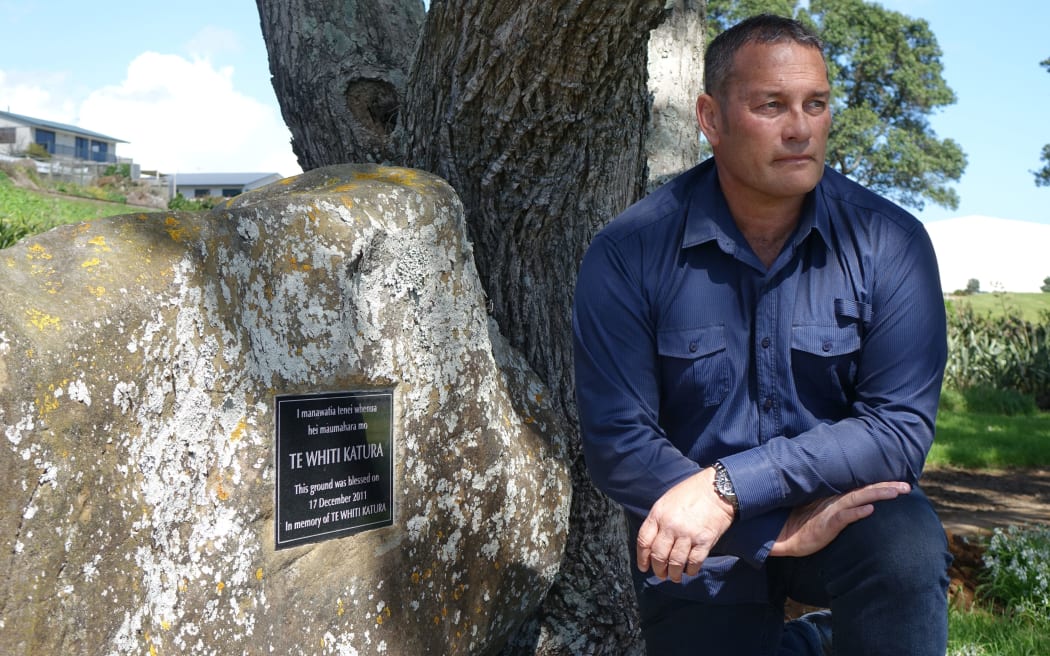A Te Ātiawa hapū remains confident that a new $6 million marae will be built in New Plymouth, despite the challenges faced by the sub-tribe.
The marae will be the first in the city for tāngata whenua since the 1800s.
Ngāti Te Whiti has had to negotiate to get its land returned from the Methodist Church in the 1990s, deal with a lengthy and complex consent process, and now sort out a potentially toxic site.

Shaun Keenan says he hopes the marae will become a hub for the wider community. Photo: Laura Maxwell
But Ngā Motu Marae project manager Shaun Keenan said re-establishing a Ngāti Te Whiti marae had been a long-held dream for the hapū and it had already looked at a number of sites.
"Really the one here, why this was chosen, was its proximity to the beach: we've got a close association with the beach and with the islands," he said.
"But also the site includes our urupā where a lot of our tipuna are buried, so that was really the deal breaker so to speak, that we wanted to be close to the urupā."
For Ngāti Whiti kaumātua Brian Kahu Tairoa, when the marae is finally a reality, it will be a homecoming of sorts.
The 77-year-old used to stay with his grandfather, who lived in a tin shack besides the urupā, when he was a child.
"What it means to me is our tipuna have done heaps of work for the other places like Manukorihi, Bell Block and Muru and that. And now it's our turn because we've never had one (a marae)."
But it has not all been plain sailing.
Mr Keenan said the latest challenge was an environmental investigation of the Ocean View Parade site near Port Taranaki, which was once a working oil field.
"Currently there's a detail site investigation. What that is, is just ascertaining if there is any pollution down here as a result of the historical petrochemical industry.
"The activity that went on down here from the late 1800s through to modern times and from that see if there is any remediation required."
It was feared it may be contaminated with PCPs, lead, asbestos and oil waste, but Mr Keenan said preliminary test results had been encouraging.
"Initial tests indicate that if there is anything that is found, once we know the extent of it, it will probably actually be able to remediated on site.
"With a lot of the residue from the sites that's left behind it's actually just a matter of exposing that to the atmosphere over a matter of two or three months and just letting the elements take their course."
Mr Keenan said the new marae had been designed to cater for the whole community's needs.
It will include a wharenui and a split-level whare kai which will connect via an enclosed gallery celebrating the town and the hapū's history.
The hapū's administrative offices and rooms available for community use will be housed in the second level of the whare kai.
The project's lead architect, Murali Bhaskar, said the marae also featured an unusual glass frontage which was suggested by the late Te Ātiawa treaty negotiator, Wikitoria Keenan, who died in December.
Mr Bhaskar said it would encourage people to interact with the building.
"We liked the idea straight away because it actually connects the building to the outside and visa versa. It's about demystifying the whole concept and it's about openness. It's about being welcoming."
He said the complex would be a blend of the traditional and the contemporary, and should appeal across the generations.
The Taranaki Regional Council investigation of the Ngā Motu Marae site should be complete in October, while construction is scheduled to begin early in 2016 and take about a year to complete.


